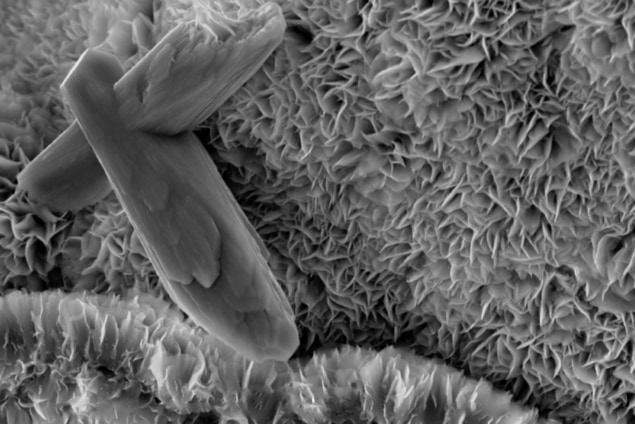
Geologists at the Massachusetts Institute of Technology (MIT) in the US have discovered a connection between two important theories of Earth’s long-term climate history. The first is that exposure of fast-weathering rocks called ophiolites correlates with the climate getting colder. The second is that as mountains erode into the sea, carbon becomes buried under the water. Both phenomena can cause large-scale cooling, and the MIT team’s findings suggest that the combination not only triggered the four major ice ages in Earth’s history, it is also continuing to cool the planet today, providing a buffer against a warming climate – albeit only on a timescale of millions of years.
Ophiolites are fragments of the Earth’s oceanic crust that have been lifted to the surface over time by plate tectonics. Once exposed to the atmosphere, these fragments weather into rocks called smectites that eventually settle back onto the ocean floor. There, they make excellent traps for carbon thanks to their layered and folded structure. Over geological timescales, these rocks thus have a global cooling effect, and researchers led by Oliver Jagoutz of the MIT’s Department of Earth, Atmospheric and Planetary Sciences say they may have helped glaciers spread over the planet’s surface in the Palaeozoic era 541-252 million years ago.
Clay sheets expand and separate
To support this conjecture, the team analysed the geochemistry and carbon isotopic history of smectite shales and limestones. “The smectite structure forms predominantly when aluminium-poor minerals (pyroxene and olivine) lose their cations to rainwater and groundwater,†explains team member Joshua Murray. “The minerals that form have weak layer charges (clay minerals look like long flat sheets that interact through electrostatic forces). The weak layer charges mean the clay sheets expand and separate, exposing a lot more surface area on which organic carbon can bind.â€
The researchers studied the formation of smectite clays for two reasons. First, they did not understand why carbon mostly precipitates out of the ocean in the form of calcium carbonate, even though so much recent weathering occurs in magnesium-rich ophiolites located in the tropics. “There are some theories of why this happens, but the fate of magnesium and how it relates to cooling is poorly constrained,†Murray says.
Second, they read in the literature about smectite clays being geologically transported to the island of Luzon, which is now part of the Philippines. Located in the South China Sea, Luzon is volcanic, and produces a lot of magnesium-rich, or mafic, smectite. The nearby island of Taiwan, on the other hand, is made largely of old metamorphic and sedimentary rocks, and produces other clay minerals. “We started to connect the dots and link these mafic ophiolitic rocks to organic burial in the past,†Murray explains.
Clay mineralogy and climate
Linking tectonic events to clay mineralogy and climate could be a promising avenue for future research, he tells Physics World. “The burial of organic matter liberates oxygen into the atmosphere, so it is worth looking at some of the major climatic events in the Earth’s history, with an eye for the mineralogy of the sediments that were deposited, particularly during the so-called great oxidation event(s) and ‘snowball Earth’,†he says.

Mystery of how dolomite forms could be solved at long last
The results could even have implications for our understanding of climate on the early Mars, since much of the Martian surface is also covered in smectite. “We are actively thinking about [how] these high surface-area clays interacted in the past,†Murray says.
Back on Earth, the findings are the first to show that plate tectonics can trigger ice ages through the production of carbon-trapping smectite, he adds. “Today, these ophiolites stretch from Papua New Guinea all the way up through northern India, Iran, Turkey, Greece, and into Italy,†Murray says. “We want to analyse the sediments which are coming off of mountain ranges in these regions of the world and assess the link between rock-type, clay mineralogy, and Earth’s carbon cycle.â€
The study is detailed in Nature Geoscience.


